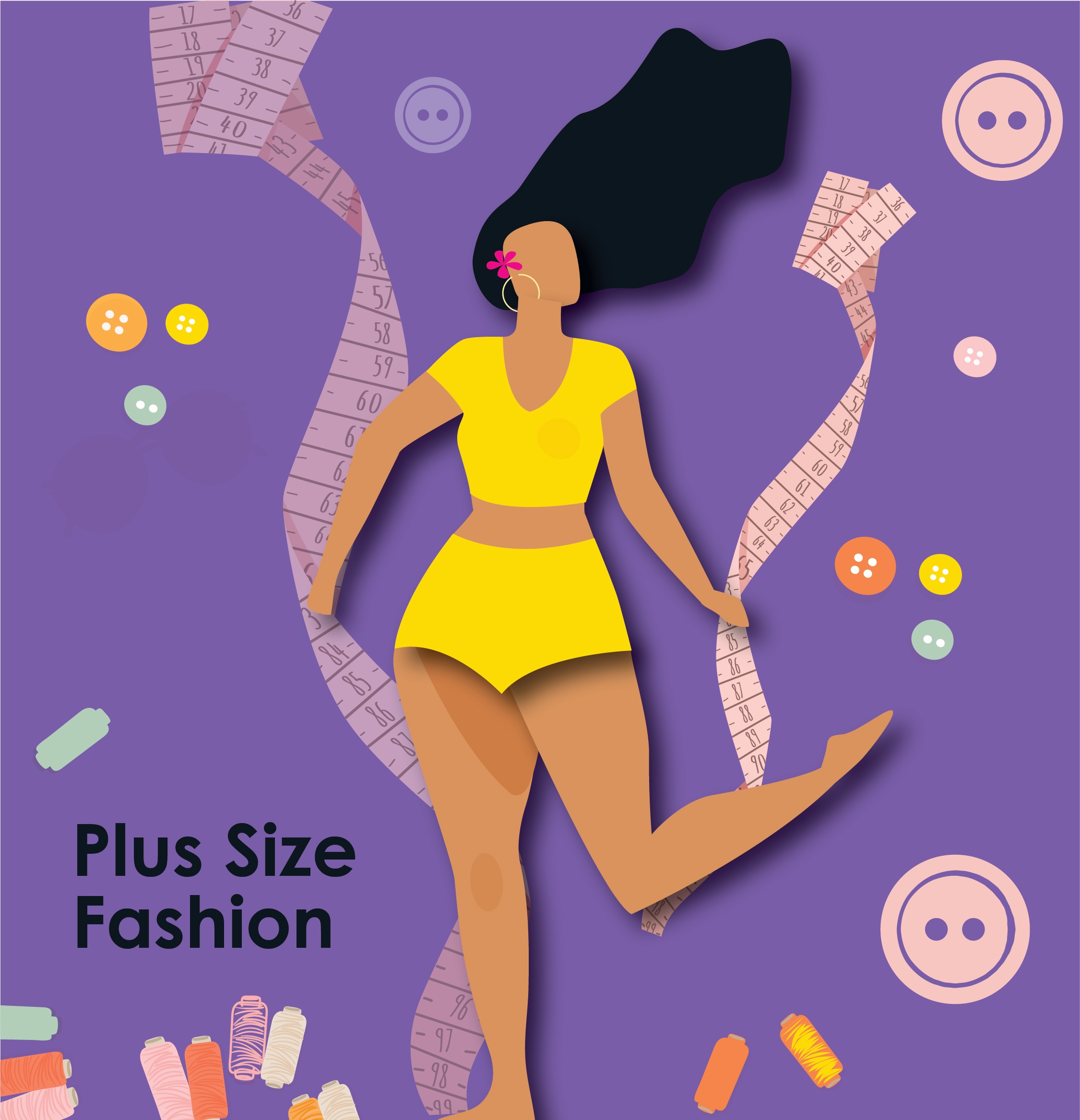Plus-size clothing has become one of the fastest-growing areas in the garment industry as people become more aware of body diversity. It can be difficult for women to understand the concept of plus size in a society where the fashion industry and media constantly insist that thin is beautiful. Unfortunately, the fashion industry has long believed that oversized and obese bodies should not be recognized, affirmed, or seen. The Indian entertainment and fashion industries have been hostile to plus-size women. Fat is stigmatized in the fashion business, and mainstream fashion imagery is virtually entirely made up of slender bodies. We really do not have a single plus-size role model for young girls to look up to here. Since there is no plus-size representation in a country with a population of 1.25 billion people, there isn’t a single plus-size role model.
When Lakmé Fashion Week, one of India’s most prestigious fashion weeks, wanted to organize the country’s first plus-size fashion show, they had to hold an open audition. This reason that there are no plus-size models in the Indian fashion business speaks eloquently about our prejudice against plus-size bodies. The sole occasion plus-size people appear in fashion magazines is when the publication is doing its yearly “shape” or “curve” or “body” issues, which are inspired by the global body-positive movement, or when the publication wants to cash in on the novelty aspect. Aside from that, there isn’t much in the way of plus-size representation in periodicals.
Perhaps the only mainstream cultural field in which overweight women and men have not only made important appearances but have also had sustained and broad popularity and fame is comedy. example: Plus size fashion and clothing, on the other hand, have been and are still frequently used on television, particularly to indicate former fatness and temporary fatness, as in the Netflix series Insatiable (2018–), in which a slim actress (Debby Ryan) plays a former fat girl who loses weight and decides to avenge her bullies, in Friends (1994–2004) in flashbacks to Monica’s (Courteney Cox) youth as a fat girl. Even in Bollywood and in the entertainment world there are some plus-size people, comedian Bharti Singh is the most famous, also known for her fat-shaming and self-deprecating comedy.
In the body landscape of popular culture, fat bodies are largely invisible. Plus-size apparel stores opened in India for the first time in 2006, and it was an internet business. In India, the plus-size market is predicted to account for 12% of the overall fashion segment and is expected to increase at a rate of 25% per year for the next five years. Conversely, the retail industry has recently recognized the segment’s potential and is taking steps to meet the unmet needs.
There Aren’t Enough Plus-Size Clothes
When it comes to fashion, glamour, and fashionable clothing, the plus-size industry has never been exactly what consumers conceive of. On the one hand, the fashion industry has provided a welcoming environment for some marginalized groups, while on the other, it has proven repressive to others. While the LGBTQ community has found a way to thrive, expand, and shape the fashion business, obese women have been purposefully left out, to the point that their very existence is denied and erased on all levels. Plus-sizes have made it impossible for women to look beautiful, fun, or glamorous, in addition to being tough to find. This is why the inclusive size market is opening up. The inclusive size market is a new frontier for high fashion, in addition to the significant cultural and societal changes that this transformation is bringing about. Plus size clothing is offered by Indian brands like Global Desi, Biba, AND, Mustard, Fusion Beats, and international brands like Marks and Spencer, Dorothy Perkins, and New Look, etc. Established businesses are slowly responding to this new trend, and new inclusive sizing labels are appearing. As a result, there are new market prospects across geographies and countries, as well as target audiences and product categories.
How should it evolve?
The best way to influence people’s opinion about plus-size women is to normalize plus-size bodies. This would only happen if everyone was represented fairly and equally. Millennial culture is especially known for its inclusivity. While there is a shift in the public’s perception of fashion and the fashion industry, designers still have a long way to go. Fashion must abandon its snobbish attitude and continual preference for slender bodies. Celebrities, models, and bloggers of all shapes and sizes must be promoted equally in order for plus size to become relevant and desirable. Fashion is such a crucial element of self-expression and communicating an identity to others, and women belonging to plus-sized groups have historically had such a limited range of identities to display because of a lack of options.




